- Home
- keyboard_arrow_right Phelan Dental Seminars
- keyboard_arrow_right Interesting Worn Dentition Case

Hi Everyone,
For this weeks blog post I thought I would share with you an interesting worn dentition case. During the last few years I have noticed that we have seen a real increase in the number of patients entering my practice with significant tooth wear seeking help.
I don’t know about the rest of you but it seems to me that with the improvement in periodontal care, patients are keeping their teeth longer which is leading to many different forms, patterns and degrees of severity of tooth wear that patients are presenting to our dental practices.
This particular patient came into my practice with a significant amount of tooth wear and the resulting occlusal changes but he had no TMJ or muscle symptoms and has good bone levels around his teeth.
I have completed a functional analysis, complete exam and treatment planning consultation with this patient and I will tell you that the tooth wear has a clear etiology.
I thought it would be an interesting learning exercise to find out what everyone believes are the possible causes for this pattern of tooth wear and what your treatment plan would be for this patient. There are a number of correct answers to these questions and next week I will share with you the etiology of wear for this patient and the treatment plan that we have decided to follow to restore him to a more healthy functional and aesthetic condition.
As usual you can leave your comments using the link above this post.
Post comments (25)
© Copyright Phelan Dental Seminars I Dr. Stephen Phelan

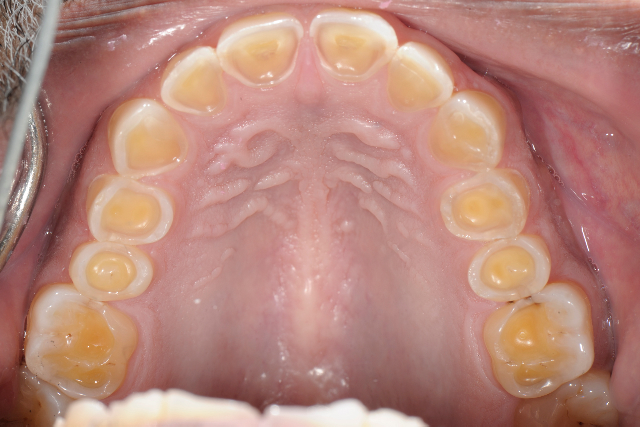
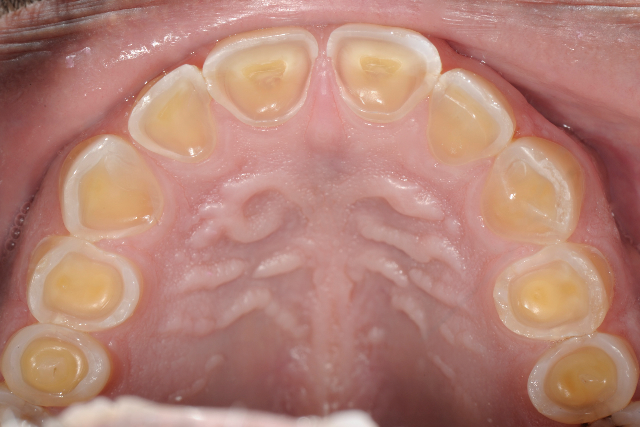
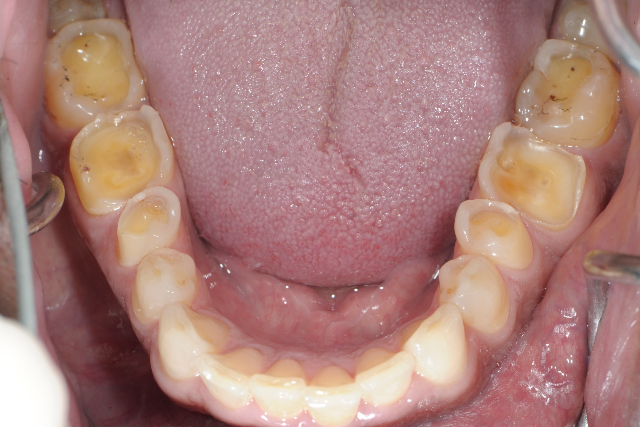
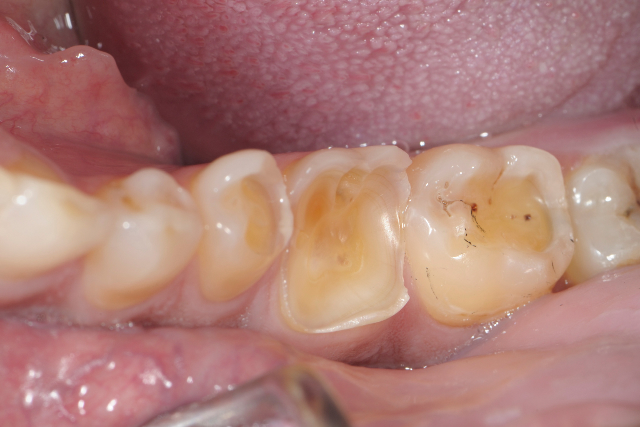
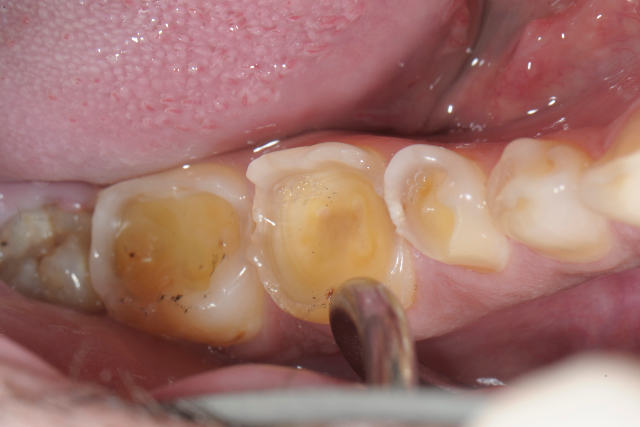
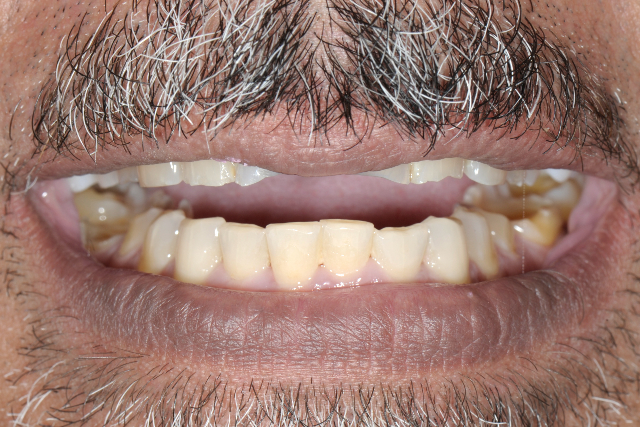
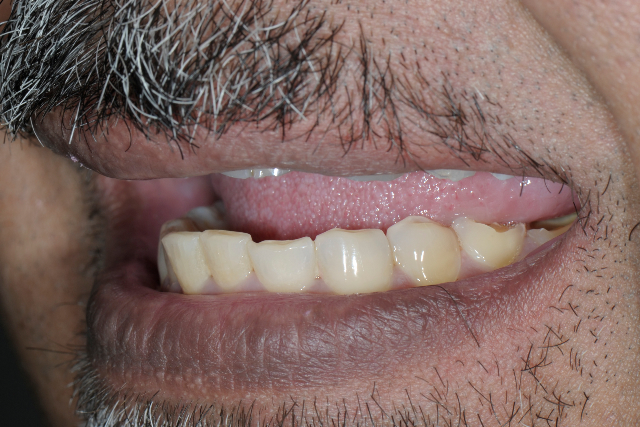
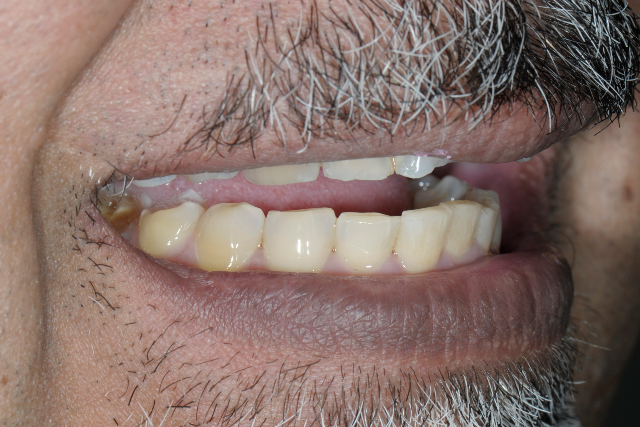
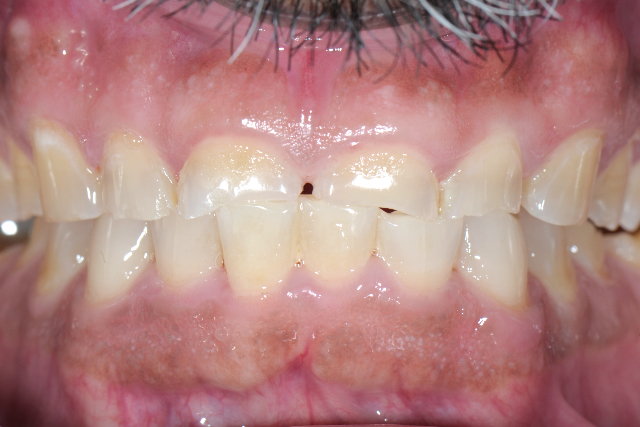
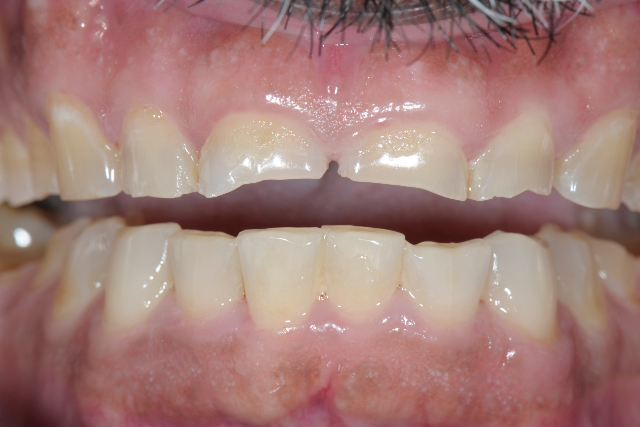
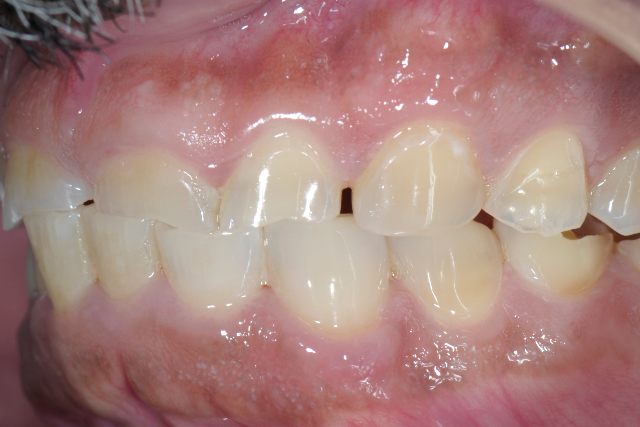
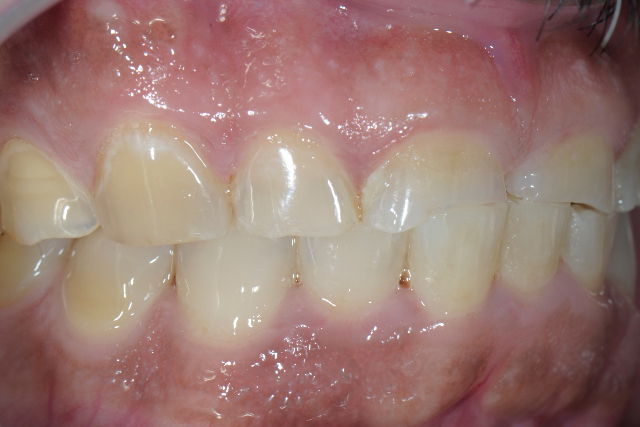
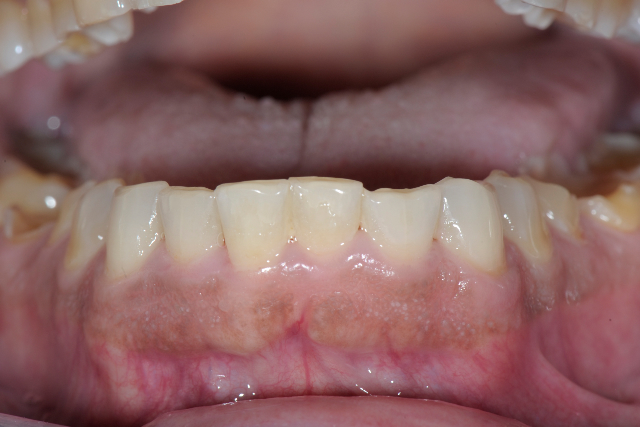
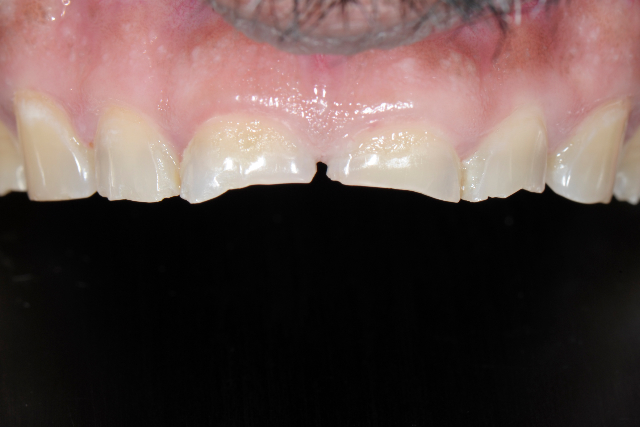

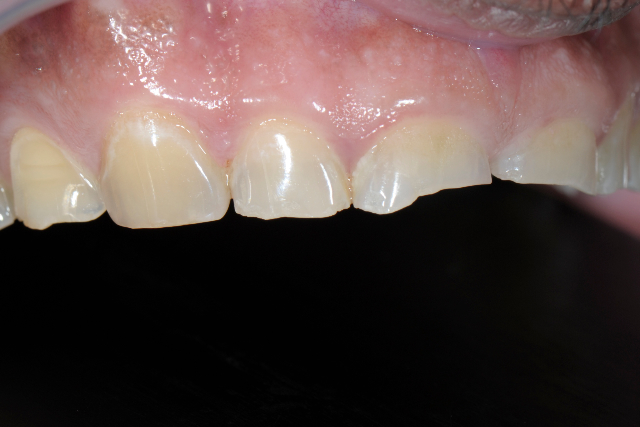


Lawrence Jones on July 11, 2011
“AHI” stands for Apnea-Hypopnea Index. AHI is a key measurement in a polysomnogram . It is the number of apneas plus hypopneas per hour of sleep.
40 Severe
Craniofacial Pain, A Handbook for Assessment, Diagnosis and Management. pg. 219-220
Larry Leslie on July 5, 2011
I know you are giving the answer this week but would like to relate what I have seen. Back in dental school in the 70s, I remember see articles on occlusion showing severe wear like this. One showed Inuit women who used their teeth to tan hides. Another were people who lived out in the desert who where constantly exposed to fine sand which was the erosive agent. I also had a young woman in my practice who chewed Vit. C tablets daily and was showing early signs of this type on erosion.
Dr Jacques Hébert, Longueuil Qc on June 27, 2011
Chemical erosion caused by the gastric acid in GERD combined with bruxism is definitaly one of the causes of this severe case of worn dentition. But why? We now know that nighttime bruxism is directly related to SBD ( sleep breathing desorder )( see work by Dr Gilles Lavigne, dean of U. de M. Dental School ) When you stop breathing during sleep( apnea), there is no oxygen entering the lungs by blocking the airway. And the brain needs that O2 to function especially during stage 3 (deep sleep) and REM. The brain wakes you up by activating all the muscles to reopen the airway resulting in bruxism. When the person is in apnea, she gasp for air resulting in the deregulation of the breathing rythm between the diaphragm and the abdominal muscles creating the acid reflux. In this case , I suspect that the patient might be apnic with an AHI of moderate to severe. Before i would attemp in doing any treatement, I would send the patient for a complete sleep study and reevaluate and treat accordingly. Note: men with severe dental wear never complain of TMD pain or anything related.
Dr Stephen Phelan on June 29, 2011
Thanks for the comments Jacques, I have been following the work of Dr. Lavigne and I believe he is really contributing great content to the subject of bruxism. What is AHI? I am not familiar with this short from.
Dr Stephen Phelan on June 26, 2011
Hi Everyone,
Thanks for all the great comments!
I am going to add another post this week to talk more about this interesting case.
Best regards,
Stephen Phelan
Julien M on June 26, 2011
I believe that dysfunction is the real ethiology to that condition.
The solution is a deprogrammer adjusted at the estimated restorative OVD. We will use the appliance to establish CR and to articulate our model for the wax up. We can than transfert that information over the patient dentition, let him work with it for a while than restore sequentially. At the end, you will adjust a full arch flat surface night guard to protect your work.
Dr Stephen Phelan on June 29, 2011
The deprogramer is a great idea to execute the treatment in a case like this but this case is caused by erosion.
dr peter walford on June 24, 2011
Like the other respondents I would look for the combination of acidity, abrasivity, and parafunction that defines the pattern. In terms of restorative plan, I have had success with correctly chosen direct composite resin in similar cases,using limited bevels, reliable bonding protocol, and meticulous isolation. The fun is planning the case, making a mockup, and then transferring it to the mouth over a closely-spaced series of appointments. Where do you start- anterior or posterior? What do you use to trial run the increased vertical? Do you sequence the case with an overlay partial to manage costs for the patient and limit long appointments? How do you ensure the patient is ready for adapting to a totally new mouth?
Whatever is done, it usually results in a very appreciative and much happier patient. I’ve detailed a few cases on my website http://www.peterwalforddentistry.com .Check Incisal Attrition on the Home page if you want to see that material. I just wanted to post the idea that I think even a case as severely broken down as this one can be treated with composite, accepting shorter lifespan and simpler esthetics than porcelain-based treatment, but of course, greater affordability. Also to open into the idea that large numbers of older patients can be successfully treated for less severe attrition problems with resin. Certainly, profitability and durability are not a question. The right resin is, plus the right patient, plus having some way to establish one’s occlusal bearings if you change the vertical . The rest is just technique and know-how.
Dr Stephen Phelan on June 29, 2011
Thanks for the comment Peter, I agree with your idea that the case could be completed with composite but it would be fairly technically challenging to create the correct tooth form and occlusal contacts. Thanks for sharing the link to your website.
sheryl lipton on June 23, 2011
i’d imagine that he speaks well–he would accommodate his speech as the wear would occur slowly over a long period of time….
of course i agree with all of the above–erosion, possible hard foods, grinding, possible GERD….no doubt multifactorial….but if they grind on porcelain, then what??(cuz they don’t always wear the nightguards and they may be clenching during the day)
my concern is how you will prevent the same thing happening when you build back up….
and, the TMJ have accommodated to the worn dentition….how will they respond when you build up (even if you use an appliance or long-term temps to determine comfort in the new vertical, i still worry about cranking them open after so many years of short teeth….)
Dr Stephen Phelan on June 29, 2011
I will show you the amount of vertical dimension increase and the thought process behind that in the next blog post.
elaine rakowski on June 23, 2011
Does this patient have a habit of chewing something highly abrasive, nut shells, gravel?
Dr Stephen Phelan on June 29, 2011
That could be the problem but not in this particular case which is caused by erosion.
Joe Bulger on June 23, 2011
Does he have a clear speaking voice? Speech can be compromised by that amount of vertical loss. People learn to compensate, but I wouldn’t be surprised if he sounds like he has a “mouth full of cotton.”
Dr Stephen Phelan on June 29, 2011
Speech is good Joe! As an aside I did like the Kings Speech movie.
Doug on June 23, 2011
I had a lady like this years ago it could be he! After much examining referrals to prev. dentistry at U of T, quite by accident in casual conversation I determined her etiology, 3-5X daily finely dividing 1g effervescent Vitamin C horse tablets with her dentition, for years. I originally restored with 2-3 mm vertical posterior opening everything in CR, currently about 1/2 of the 26 teeth have been C&B’ed.
Dr Stephen Phelan on June 29, 2011
It is interesting to see the different cause of erosion that lead to this kind of tooth wear.
Yves Ayotte on June 23, 2011
I also agree that the wear pattern indicates that something else than occlusion is involved. The medical and habits review should provide more info that is crucial to provide treatment that will last. If the cause cannot be found and stoped, the treatment prognosis will be severely affected (as the teeth).
So, proper examination and diagnosis is critical before initiating anything permanent.
In the mean while, a prosthesis to establish is occlusion hight and pattern could be initiated.
Dr Stephen Phelan on June 29, 2011
Yes, this is erosion and we have identified the cause.
John Gibson on June 23, 2011
Definitely erosion compounded by vigorous wear. I agree above possible GERD or chronic acidity in diet. I have seen a similar pattern from believe it or not vinegar on everything, sport drinks or God forbid wine and involved in viticulture.
Dr Stephen Phelan on June 29, 2011
You are on the right tract John!
Mark Santana on June 23, 2011
This patient is actually a horse and chews grass and hay all day. Massive wear. Interesting how the wear pattern displays itself as predominantly maxillary premolar to premolar then shifts to mandibular molars. Is this patient a mild class 3 occlusion with steep mandibular angle that formerly had a slight open bite (before he wore out the open bite). I am wondering if this patient has an uncontrollable severe bruxism due to something like CP?
Dr Stephen Phelan on June 29, 2011
We believe the problem is mostly erosion as you will see in the next blog post.
Timothy g Mahoney on June 23, 2011
Hi Stephen, I think there is definitely an erosive component in addition to the bruxing. Does this patient have GERD or is he bulemic? I’m sure you’ve opened his vertical with or without crown lengthening (for sure on the centrals, without radiographs it’s hard to see where the bone levels are). I’ve dealt with a number of these cases successfully. Hopefully, the erosive problem has been looked after! Nice case but can be dangerous!
Dr Stephen Phelan on June 29, 2011
Yes I think this is mostly erosion and I will let you know what we identified in the next blog post.